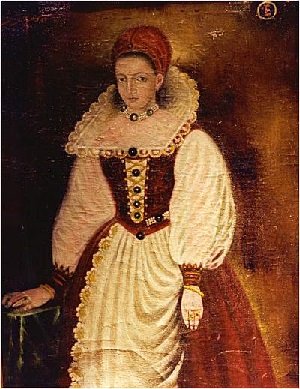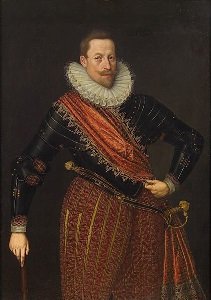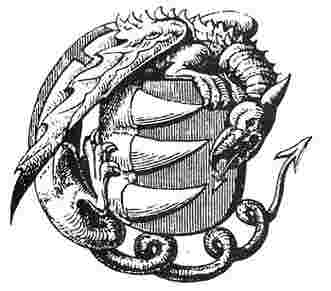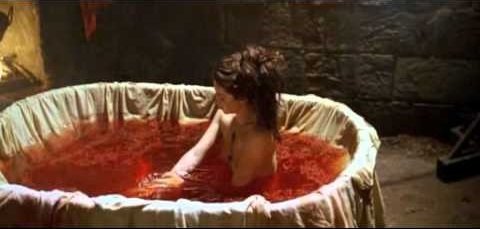Elizabeth Báthory, the Bloody Countess

The truth is a strange beast, and often the best that history can do is simply tell you what is likely to be true rather than give a definitive answer. Elizabeth Báthory is a good example of this. She is painted by some historians as the most prolific female serial killer of all time, and by others as a virtuous woman framed for political reasons by those who despised her religion and feared her influence. We cannot know if either of these is true, but the presumption that either of these extremes must be true is clearly flawed. The truth, if such a thing exists, can perhaps be found in between.
Elizabeth Báthory (or Erzsébet, to use the Hungarian spelling) was born into a Hungarian noble family on the 7th August, 1560. Her mother’s father had been the Voivod (or Prince) of Transylvania, as had her father’s brother – in fact, her parents came from two branches of the Báthory family. Her mother’s brother Stephen (or István) would go on to marry the elected Queen of Poland, becoming one of the most famous Polish kings. The Báthory family were powerful – powerful enough that when Elizabeth married Ferenc Nádasdy at the age of 15, her 21 year old husband adopted her name rather than her adopting his. It was clearly more prestigious to be a Báthory than than a Nádasdy.
They had become engaged five years earlier, and as was traditional Elizabeth had gone to live with her husband’s family in Castle Sárvár, in the west of Hungary. The pair were not well matched – Elizabeth was by all reports intelligent and well-educated, headstrong and fierce of temper. Ferenc matched her in temper, but was barely literate and obsessed with becoming a soldier. There are stories of Elizabeth suffering from crippling headaches, possibly migraines, possibly caused by epilepsy (which the Báthory family had a history of). These generally left her in a foul mood, which she took out on those around her. There were rumours, after her death, that while she was living in Sárvár (before her wedding) she had an affair with one of the male servants, and became pregnant. When Ferenc found out he had the servant castrated and then thrown, still bleeding, into a pack of dogs which tore him apart. Elizabeth was taken into seclusion until she gave birth to her daughter, who was immediately taken away from her. Those who repeat this story claim that the lack of evidence of this daughter shows that Ferenc must have had her killed. A classic example of circular reasoning at work. In fact, most contemporary letters praise Elizabeth’s chastity, especially later in life when her husband was often away campaigning. If the story is true, however, then it is a testament to the power of the Báthory family that Ferenc went ahead with the wedding.

It was only after five years of marriage that Elizabeth had a child, though she went on to have at least three daughters and two sons, of whom two daughters and a son would survive into adulthood. The family at first lived in Sárvár, but when Ferenc went off to fight in Hungary’s endless wars Elizabeth moved to Cachtice, a castle which had been a wedding gift to her from Ferenc. Her primary residence was not the castle itself, but rather a comfortable manor house about half a mile down the mountain from the fortification. She travelled a lot, as she was responsible for maintaining the defense of her husband’s lands during the Long Turkish War. This conflict was fought from 1593 until 1606 between the Ottoman Empire and the Christian kingdoms of eastern Europe. This was a real threat, as they were close enough to the border to have been the subject of Turkish raids in the past. Ferenc, in the meantime, gained a reputation as a brave and skillful warrior, and one with a vicious streak towards Ottoman prisoners – though this was hardly unusual for the time. At some point around 1601 or 1602 he began suffering from some illness in his legs, though details are sketchy. In 1604, aged 48, he died, apparently of the same illness.
At the time Elizabeth had a coterie of five close servants. There was a young (reportedly disfigured) boy named János Újváry, though he was more commonly called Ficzkó, or “little fellow”. There were three old ladies – Ilona Jó Nagy, who had been the wet-nurse for Elizabeth’s children, and two friends of hers named Dorottya Szentes and Katalin Beneczky. And then there was the closest of her servants, the mysterious Anna Darvolya. Later rumours would paint Anna as a witch, and Elizabeth’s lesbian lover as well. Other rumours claim that Anna was seduced by her mother’s sister Klara while visiting her castle. There is, of course, no actual evidence for any of these rumours. Nor is there any direct evidence for the most common rumours – that Elizabeth began abducting local women and torturing them for sport. Of course, nor is there any evidence against it, and torture for sport was hardly uncommon among Hungarian nobles at the time. It usually took the form of meting out “justice” for crimes, though the sadistic glee of the punishments far outweighed any actual crime. But even for this vicious society, Elizabeth seems to have taken things to an extreme. By 1602, the priests on her estates began to question the number of deaths from “cholera” of her servants, and to ask about the screams that were heard coming from the castle. Ferenc’s reputation and political connections generally served to quash these allegations, and even after his death Elizabeth’s own power and wealth kept her safe. In the end however, without the income from Ferenc’s war booty to boost her fortunes she began to lose her wealth and thus her position in society. She started a finishing school for young noble daughters, in an attempt to bring in some income and to win herself some allies, but it wasn’t enough. Finally in 1610 the King ordered her arrested.

In truth, however, there were many reasons for the King to move against her. The primary one was the activities of the Báthory family. At the time the King of Hungary was Matthias II, a Hapsburg who was the brother of the Holy Roman Emperor Rudolf II (and future Holy Roman Emperor himself). Hungary had fallen under the rule of the Hapsburgs in 1526, and the local nobles (who had previously elected their kings) still frequently attempt to rebel and break away from the European hegemony. One such rebellion had been led by Sigismund Báthory, Elizabeth’s cousin, in an attempt to assert the independence of Transylvania, and Elizabeth had spoken in support of her cousin. Another reason was financial – Ferenc had made many loans to the crown, and Matyas had inherited those debts. The third was religion – Elizabeth was a Calvinist, while the clergy denouncing her were mostly Lutherans (and Matthias himself was a Catholic). While this was probably not a prime motivator, it definitely meant that there were few willing to go to her defence.
It’s important to remember that just because Matthias had ulterior motives for prosecuting her does not mean that Elizabeth was not guilty. Whether she was any more guilty than any of the other nobles of the kingdom is another question entirely. Still, when György Thurzó, the King’s second (who had generally been one of Elizabeth’s allies, as he had been a friend of Ferenc) went to Cachtice in 1610 to arrest her and her servants he found several dead and dying girls in the castle. There was a story that he caught Elizabeth “red handed” torturing one of them, but this is most likely a later fabrication. The castle was searched, and the servants were taken off in chains while Elizabeth was kept under house arrest. The legal situation, despite the definitive evidence, was actually far from clear cut. As a noble, Elizabeth had the right to do as she wished to the peasants under her rule, and the best they might be entitled to (even for her killing them) was financial compensation. The most serious charges against her were that she had been responsible for the deaths of noble children who had been sent to her finishing school, but that charge couldn’t be proven.

As a result while the three elderly servants and Ficzkó were put on trial, Elizabeth herself was not. [1] Despite this, their trial turned (in the eyes of the public) into an indictment of Elizabeth. Confessions (obtained under torture) as well as the testimonies of witnesses painted a bloody picture. There were around 80 victims directly attributed to Elizabeth, though one witness claimed to have seen a meticulous record kept by her that claimed 650 victims. Witnesses spoke of her burning and cutting her victims, and even of her having them brought close enough for her to bite when her headaches left her confined to her bed. At the time, however, no stories of drinking or bathing in blood were part of the charges – those were a later embellishment. For their part in this two of the women (Ilona Jó Nagy and Dorottya Szentes) were tortured and then burnt at the stake. Ficzkó was executed, and then his body was burned. Katalin Beneczky was considered less culpable and so was spared her life in prison. That left only the question of what to do about Elizabeth.
Letters indicate that the King had intended to put Elizabeth on trial as well, but György convinced him that this would be perceived by the Hungarian nobles as a challenge to their authority over their peasants. Instead, by royal decree she was to be permanently incarcerated. The exact logistics are somewhat confused in the accounts – some have it that she was literally bricked up, but the apparent presence of a bodyguard in her apartments makes that problematic. Regardless, she never left Cachtice Castle for the rest of her life, while her name was considered damnatio memoriae – literally, “damned from memory”, and never to be spoken of. [2] This may explain why only one portrait of her made during her lifetime survived. Elizabeth herself lived on until 1614, when she complained to her bodyguard of poor circulation to her hands as she was going to bed. The next morning she was found dead. She was at first buried in the local church, but the outcry against this led to her being exhumed and moved to the Báthory family tomb in Ecsed, where she had been born – though whether her bones made it there is unknown, as it was reported in 1938 that her tomb had been opened by archaeologists and found to be empty.

Much like the countess herself, her legend refused to rest easy. The stories circulated among the local peasantry, and in 1729 the Jesuit historian László Turóczi included it in his book Tragica Historia. By this time the story that she had been bathing in blood to restore her youth was part of the legend, and László repeated it uncritically. The great Hungarian historian Matthias Bel quoted László’s account in 1742, and though he was sceptical of the tale his much greater reach (as one of Europe’s most famous scholars at the time) ensured that the tale spread far and wide. The official trial records were rediscovered in 1765, but not published until 1817. By then the legend of the countess and her thirst for blood had become well established (as the popularity of de Sade’s writing shows, there was an appetite for macabre and disturbed literature at the time), and the symbology of the immoral noble literally feeding off the blood of the common people struck a powerful chord with the growing popular movements in Europe at the time. With the popularisation of vampire tales, first through Polidori’s Vampyre, and then with Stoker’s Dracula. Elizabeth’s association with blood and Transylvania made her a natural subject for vampire fiction, and this became an inextricable part of her legend. Even in modern times, the Countess is a staple of vampire tales, and her name has become synonymous with the abuse of aristocratic power. Perhaps it’s easier to think of her as a monster, as an aberration, rather than simply being one of the few who were ever brought to task for their crimes. There is little more horrifying, after all, than the thought of the horrifying being commonplace.
Images via wikimedia except where noted.
[1] Anna Darvolya had died the previous year.
[2] An official legal sentence in ancient Rome, and reflected in the treatment of those purged by Stalin in the 20th century.
